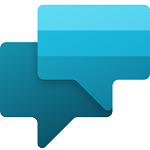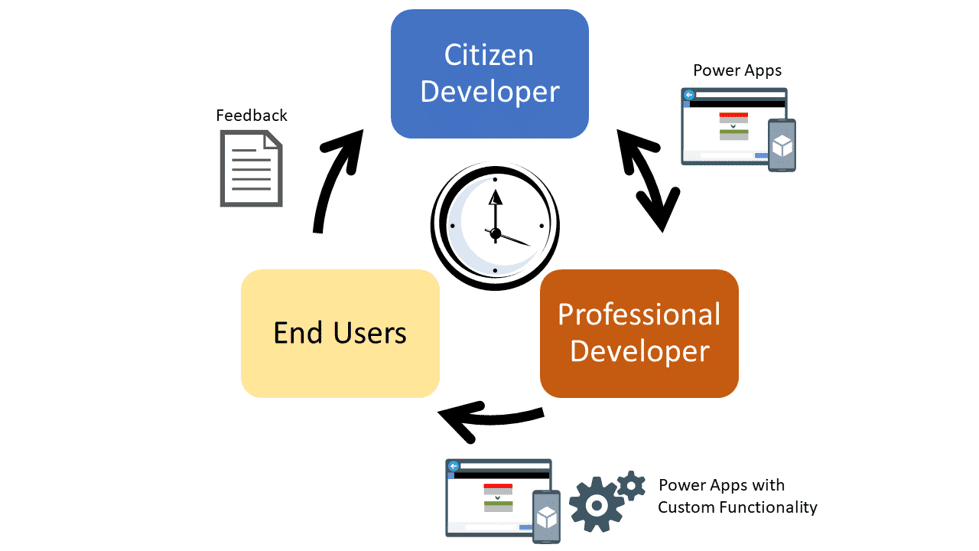MICROSOFT POWER PLATFORM
Click here to join us for a day learning about the Power Platform
What is Microsoft Power Platform?
Microsoft Power Platform is composed of four key products: Power Apps, Power Automate, Power BI and Power Virtual Agents.

Power Apps provides a rapid low code development environment for building custom apps for business needs. It has services, connectors, and a scalable data service and app platform (Microsoft Dataverse) to allow simple integration and interaction with existing data. Power Apps enables the creation of web and mobile applications that run on all devices.
People use apps for every area of their lives, and business should be no exception. Most out of the box solutions do not meet exact business needs or integrate well with other business programs. Power Apps eases users into app development with a simple interface so that every business user or pro developer can build custom apps.

Power Automate lets users create automated workflows between applications and services. It helps automate repetitive business processes such as communication, data collections, and decision approvals.
Don’t waste important productive hours on drafting the same email for a weekly update or walking approvals through. Not only for the individual user, Power Automate allows for the creation of enterprise-grade process automation. Power Automate’s simple interface allows every level of user to automate work tasks – from beginners to seasoned developers.

Power BI (Business Intelligence) is a business analytics service that delivers insights for analyzing data. It can share those insights through data visualizations which make up reports and dashboards to enable fast, informed decisions. Power BI scales across an organization, and it has built-in governance and security allowing businesses to focus on using data more than managing it.
You can consider Power BI as the analysis and insights leg of Microsoft Power Platform. It takes business data and allows you to display it in ways that makes the most sense to users. A Power BI dashboard could potentially replace a standing meeting to report out on company metrics such as sales data, progress against goals, or employee performance.

Power Virtual Agents enables anyone to create powerful chatbots using a guided, no-code graphical interface, without the need for data scientists or developers.
It minimizes the IT effort required to deploy and maintain a custom solution by empowering subject matter experts to build and maintain their own conversational solutions. Power Virtual Agents is part of Microsoft Power Platform, therefore integration into existing systems is streamlined with out-of-the-box integration with Power Automate and its ecosystems of hundreds of connectors.
Users can enable chatbots to perform an action by simply calling a Power Automate flow. Flows help users automate activities or call back end systems. Users can utilize existing flows that have been created in their Power Apps environment or they can create a flow within Power Virtual Agents authoring canvas.
Features
Among the programs listed above, there are cross cutting features which enable Microsoft Power Platform to be leveraged to its full potential. Some of these are:
AI Builder lets users and developers add AI capabilities to the workflows and Power Apps they create and use. AI Builder is a turnkey solution that allows you to easily add intelligence to your workflows and apps and predict outcomes to help improve business performance without writing code.
Microsoft Dataverse is a scalable data service and app platform which lets users securely store and manage data from multiple sources and integrate that data in business applications using a common data model to ensure ease and consistency to users. Microsoft Dataverse is the common currency that enables the components of Microsoft Power Platform to work together. It’s the foundation that enables the consolidation, display, and manipulation of data.
Connectors enable you to connect apps, data, and devices in the cloud. Consider connectors the bridge across which information and commands travel. There are more than 600 connectors for Microsoft Power Platform, enabling all of your data and actions to connect cohesively. Examples of popular connectors include Salesforce, Office 365, Twitter, Dropbox, Google services, and more.
Although every feature is essential to building powerful solutions, let’s dive in deeper to one of the features of Microsoft Power Platform, connectors.
MS Power Platform eBook
Build Your Fusions Teams

